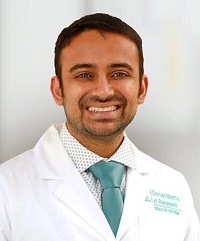
A novel augmented reality (AR) platform (Proximie) has been successfully used to teleproctor a neuroendovascular fellow during complex interventional and diagnostic procedures. That is according to a scientific abstract presented at the 13th Congress of the European Society of Minimally Invasive Neurological Therapy (ESMINT 2021; 8–10 September, Nice, France and virtual). In the opening session of ESMINT 2021, Sohum Desai (Valley Baptist Medical Center, Harlingen, USA) presented a single-centre experience involving 10 cases in which a fellow was guided through a variety of neuroendovascular procedures remotely.
Desai first noted that remote teleproctoring technologies are currently available, and have been used in neuroendovascular surgery before, but that there is limited evidence on this approach—whereby an on-site surgeon is supervised remotely by an attending physician—within fellowship training specifically. Desai and his colleagues therefore set about investigating the use of an AR platform to guide fellows through neurointervention procedures.
“This platform is a little bit different to other remote teleproctoring solutions in that it is completely cloud-based, and it can capture and stream feeds from up to four devices,” Desai added. “In our setting, in the cath lab, we obtained direct feeds from the biplane, as well as additional feeds from two cameras that were set up within the operating room—one was ceiling mounted, and the other was set up within a computer workstation.”
He also detailed that a microphone enabled the attending physician to hear any concerns the fellow had during the procedure, and provide immediate feedback via an intercom system. Desai noted that the teleproctoring platform comes with several AR tools and overlays—for example, one such tool allowed the attending physician to label the exact location of stenoses and other features on an angiogram using an electronic pen, with these directions also being visible to the operating fellow.
A consecutive series of 10 diagnostic and interventional neuroendovascular surgeries were performed on eight patients in the study, Desai stated, including a left inferior division middle cerebral artery (MCA) balloon angioplasty, and left and right carotid artery stenting (CAS) procedures. Some 30% of these patients were female, and the median patient age was 63±18.6 years. Desai reported that all 10 procedures were a technical success, and no immediate postoperative complications or deaths occurred in the case series.
“We found it very easy to use and easy to set up, even for a non-technical person. There were also no instances where the feed could not demonstrate what the fellow was doing, nor instances where the fellow was unable to understand what the attending physician was asking them to do,” Desai noted. He added that this case series, the details of which have also been published in Interventional Neuroradiology, “demonstrates the successful use of an AR teleproctoring platform to guide a neuroendovascular fellow through complex neurointervention procedures from a remote setting”.
“The possible wider impact of this work is that this solution can be further implemented in residency and fellowship training programmes—possibly even to allow visiting professors to give neuroendovascular fellows a flavour for different styles of intervention,” Desai further concluded.













